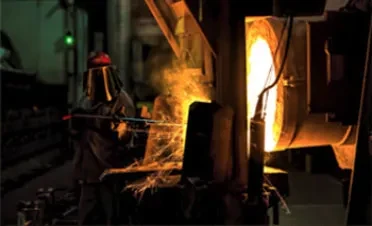Advanced Techniques for Machining Carbon Fiber Materials in Precision Engineering
Machining of Carbon Fiber Techniques and Considerations
As industries continue to seek lightweight and high-strength materials, carbon fiber has emerged as a top choice. Its remarkable properties, including high tensile strength, low weight, and excellent corrosion resistance, make it ideal for applications in aerospace, automotive, sporting goods, and medical devices. However, despite its advantages, machining carbon fiber comes with its own set of challenges and considerations that are pivotal for successful production.
Understanding Carbon Fiber
Carbon fiber is comprised of long, thin strands of carbon atoms bonded together in a crystalline structure. This unique configuration lends the material its strength while maintaining a light weight. The fibers are often woven into a fabric and infused with a resin to form a composite material. While the resultant composites exhibit superior performance characteristics, machining them effectively requires a deep understanding of the material's properties.
Machining Process
Machining carbon fiber involves cutting, drilling, milling, or grinding the composite material to achieve the desired shape and finish. Traditional machining techniques used for metals may not perform well with carbon fiber due to the material's abrasive nature and the different thermal properties of the composite. Thus, specialized strategies must be employed.
1. Tooling Selecting the right tools is paramount. Carbide or diamond-coated tools are recommended for cutting carbon fiber, as they offer the necessary hardness to withstand the abrasive fibers. Additionally, using tools with a larger cutting diameter can help improve the surface finish and reduce fiber fraying.
2. Cutting Speed and Feed Rate Optimal cutting speeds and feed rates are critical to prevent overheating and damage to the fibers. Generally, lower speeds are advisable to reduce the risk of burning the matrix and causing delamination, which can compromise the structural integrity of the part.
carbon fiber machining

3. Cooling and Dust Management Unlike metals, carbon fiber does not generate significant heat during machining. However, the process produces fine dust that can pose health risks and impact the environment. Employing effective dust collection systems and using cooling fluids can mitigate these issues and prolong tool life.
4. Machining Techniques Several machining techniques can be utilized when working with carbon fiber composites. These include - CNC Machining Computer Numerical Control (CNC) machining provides high precision and is particularly effective for complex shapes. It automates the cutting process and ensures repeatability. - Waterjet Cutting This technique uses a high-pressure stream of water mixed with abrasive particles to cut through carbon fiber without generating significant heat, making it ideal for intricate designs and minimizing fiber damage. - Laser Cutting While laser cutting offers a clean edge and high precision, careful control of parameters is crucial to prevent resin burning.
Challenges in Machining Carbon Fiber
Machining carbon fiber comes with inherent challenges that operators must navigate. The most significant issues include
- Fiber Fraying The exposure of fiber ends during machining can lead to fraying, which affects both aesthetics and the structural performance of the part. Tool selection and technique adjustments are vital to minimize this issue. - Delamination Improper machining can result in the separation of layers within the composite, known as delamination. This is especially critical in load-bearing applications where structural integrity is a concern. - Health Hazards Fine carbon dust created during machining is a health hazard. Protective measures such as appropriate respiratory equipment and effective ventilation are essential to safeguard workers.
Conclusion
Machining carbon fiber requires a deep understanding of the material's unique properties and challenges. By utilizing the right tools, techniques, and precautions, manufacturers can achieve high-quality parts that leverage the advantages of carbon fiber. With advancements in technology and a growing emphasis on lightweight materials, the demand for proficient carbon fiber machining is poised to increase, making it essential for industries to adapt and refine their methods. Embracing innovation within this field will ultimately enable industries to harness the full potential of carbon fiber, paving the way for more efficient and sustainable designs in the future.
-
Precision Sheet Metal Stamping Manufacturer | Fast & ReliableNewsAug.01,2025
-
OEM Sand Cast Pump Valve Fittings - Baoding Hairun Machinery And Equipment Trading Co., Ltd.NewsAug.01,2025
-
Custom OEM Impellers | High Efficiency & PrecisionNewsAug.01,2025
-
OEM Sand Cast Pump Valve Fittings - Baoding Hairun Machinery | Customization, Quality AssuranceNewsAug.01,2025
-
OEM Sand Cast Pump Valve Fittings - Baoding Hairun Machinery And Equipment Trading Co., Ltd.NewsAug.01,2025
-
OEM Sand Cast Pump Valve Fittings - Baoding Hairun Machinery And Equipment Trading Co., Ltd.NewsJul.31,2025















